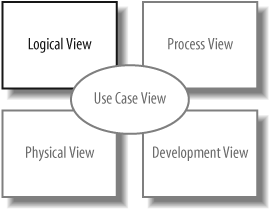Chapter 7. Modeling Ordered Interactions: Sequence Diagrams
Use cases allow your model to describe what your system must be able to do; classes allow your model to describe the different types of parts that make up your system’s structure. There’s one large piece that’s missing from this jigsaw; with use cases and classes alone, you can’t yet model how your system is actually going to its job. This is where interaction diagrams , and specifically sequence diagrams, come into play.
Sequence diagrams are an important member of the group known as interaction diagrams. Interaction diagrams model important runtime interactions between the parts that make up your system and form part of the logical view of your model, shown in Figure 7-1.

Sequence diagrams are not alone in this group; they work alongside communication diagrams (see Chapter 8) and timing diagrams (see Chapter 9) to help you accurately model how the parts that make up your system interact.
Tip
Sequence diagrams are the most popular of the three interaction diagram types. This could be because they show the right sorts of information or simply because they tend to make sense to people new to UML.
Sequence diagrams are all about capturing the order of interactions between parts of your ...
Get Learning UML 2.0 now with the O’Reilly learning platform.
O’Reilly members experience books, live events, courses curated by job role, and more from O’Reilly and nearly 200 top publishers.

